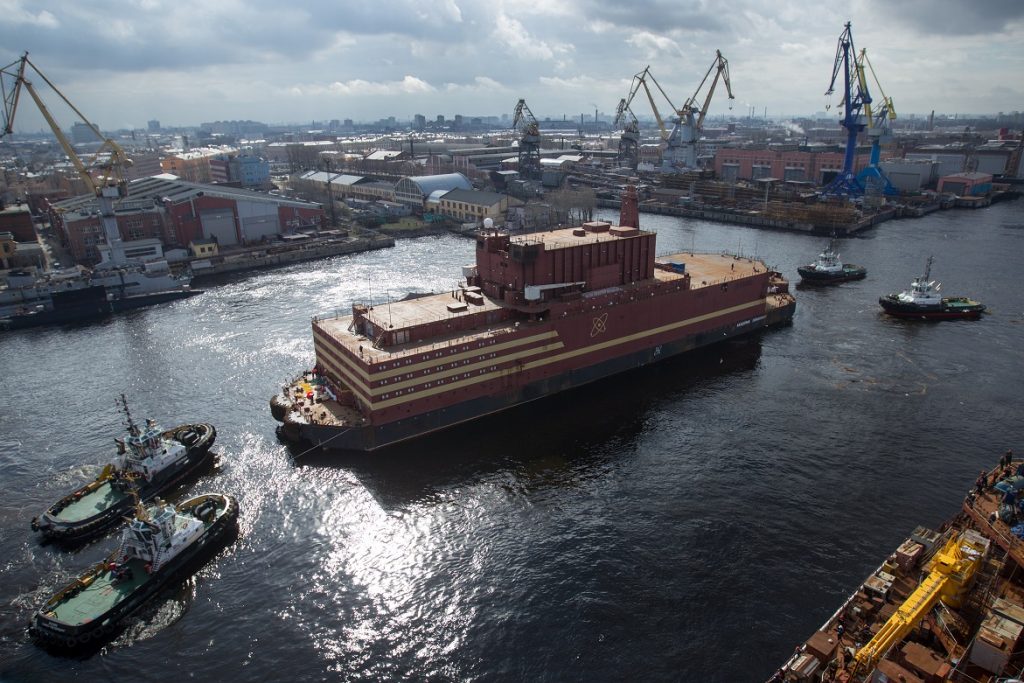
30 April 2018, Sweetcrude, Saint-Petersburg – Akademik Lomonosov, the world’s, so far, only nuclear floating power unit (FPU), has set sail from the Baltic Shipyard. The unit is en route to its final destination – Pevek, Chukotka (in Russia’s Far East), where it will operate as a floating nuclear power plant.
Akademik Lomonosov will first be towed to Murmansk, where nuclear fuel will be loaded into its reactors. First criticality of the reactors is scheduled for autumn 2018.
Vitaly Trutnev, director of Directorate for the Construction and Operation of Floating Nuclear Thermal Power Plants, a Rosatom’s subsidiary, said:
“It is a significant milestone for our project as well as for the whole world’s nuclear industry. Floating nuclear power plants will enable electricity and heat supply to the most remote regions boosting growth and sustainable development.
Building upon three hundreds of reactor-years of safe operation of units powering icebreakers, FNPP features the most cutting edge safety and security systems and is expected to be one of the safest nuclear installations in the world”.
All necessary construction works to create on-shore infrastructure are underway in Pevek. The pier, hydraulic engineering structures, and other buildings, crucial for the mooring of FPU and operation of a FNPP will be ready to use upon Akademik Lomonosov arrival.
In summer 2019, once nuclear fuel has been loaded and the crew has come aboard, nuclear FPU Akademik Lomonosov is expected be towed to the sea port of Pevek. Average towing speed is estimated at 3.5-4.5 knots. FNPP Akademik Lomonosov will replace Pevek’s aging Bilibino Nuclear Power Plant and Chaunsk coal-fired power plant, saving about 50,000 tones of CO2 emissions per year compared to the current levels. Upon its connection to the grid, Akademik Lomonosov will become the northernmost nuclear installation in the world.
The nuclear FPU is equipped with two KLT-40C reactor systems (each with a capacity of 35 MW) similar to those used on icebreakers. Designed by Russian nuclear scientists and naval architects, the vessel is 144 metres long and 30 metres wide, and has a displacement of 21,000 tonnes. Akademik Lomonosov – the first ship of this kind – was named after the 18th century Russian scientist Mikhail Lomonosov.
The lifecycle of the nuclear FPU is 40 years with the possibility of being extended to up to 50 years. After decommissioning, the FPU will be towed to a special deconstruction and recycling facility.
Rosatom is already working on second generation FPUs, or Optimized Floating Power Units (OFPUs), which will be equipped with two RITM-200M reactors (each with a capacity of 50 MW). In addition to having a greater power capacity, OFPUs will be smaller than their predecessors.



